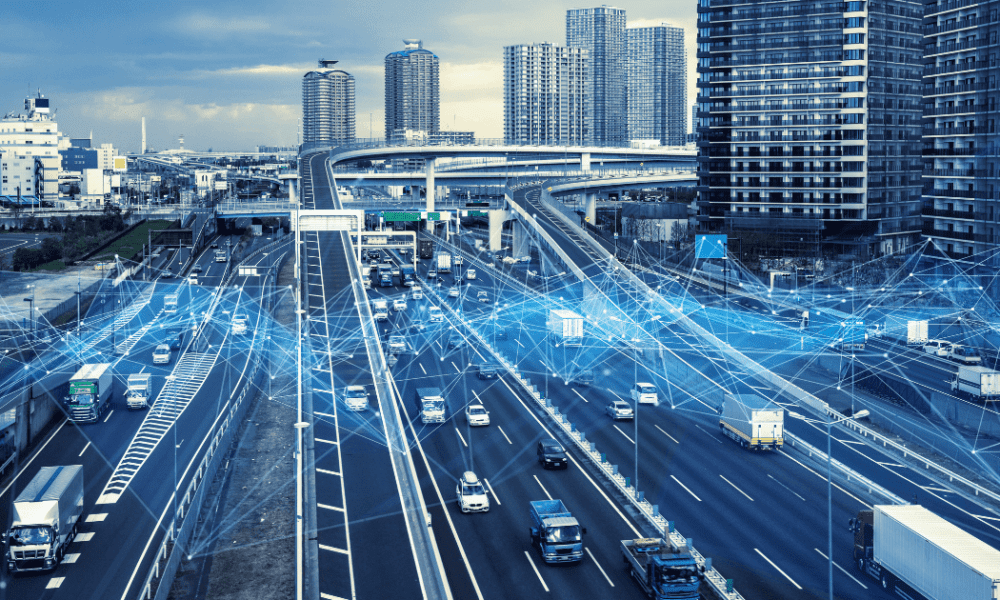The Role of AI in Enhancing Legal Outcomes for Ride-Sharing Accidents

In the tapestry of modern conveniences, ride-sharing services have woven themselves into the fabric of our daily lives with undeniable utility. Yet, as these services flourish, so do the complexities of legal disputes arising from accidents. The intersection of technology and law often seems like a battleground of wits and patience. However, the advent of Artificial Intelligence (AI) in the legal arena is promising a new dawn, one where the scales of justice balance more swiftly and accurately than ever before. This article delves into how AI is not just enhancing but revolutionizing legal outcomes in ride-sharing accidents, turning the tide in favor of fairness and efficiency.
The Gordian Knot of Ride-Sharing Accidents
Ride-sharing accidents present a labyrinth of legal challenges that often leave both victims and legal professionals in a quagmire. At the heart of the issue is the complex web of liability. Is the driver at fault? Or does the responsibility lie with the ride-sharing company? Perhaps a third party played a role? The answers are rarely straightforward. Furthermore, the process of gathering and analyzing evidence can be painstakingly slow, muddied by the biases and errors inherent in human judgment.
Statistics paint a grim picture, underscoring the urgency of the matter. According to the National Highway Traffic Safety Administration (NHTSA), ride-sharing vehicles are involved in thousands of accidents each year, contributing to a notable percentage of all traffic-related fatalities. The legal disputes that follow can drag on for months, if not years, exacerbating the emotional and financial toll on those involved.
Enter AI: A Beacon of Hope
In this murky legal landscape, AI emerges as a beacon of hope. Its application in the legal field, particularly in ride-sharing accident litigation, is not a matter of if but when. AI technologies, such as machine learning algorithms and natural language processing, are already making waves in evidence collection and analysis, predictive analytics, and accident reconstruction.
One of the most groundbreaking applications of AI is in the automated collection and analysis of evidence. Through the integration of AI systems, legal professionals can swiftly gather and sift through vast amounts of data, from traffic camera footage to GPS data and ride-sharing app logs. This not only speeds up the process but also enhances the accuracy of the evidence collected, minimizing the risk of human error.
Predictive analytics is another area where AI is making its mark. By analyzing past legal cases and outcomes, AI can predict the likely outcome of current cases with remarkable accuracy. This insight can be invaluable in strategizing the legal approach and in negotiations, potentially saving clients time and money.
Perhaps most visually impressive is AI’s role in accident reconstruction. AI-driven simulations can recreate the exact conditions of an accident, providing a clear, unbiased view of what transpired. This can be a powerful tool in court, offering compelling evidence that can sway the outcome of a case.
Case Studies: AI in Action
While the full potential of AI in ride-sharing accident litigation is still unfolding, there are already instances where its impact is undeniable. For example, in a recent high-profile case, AI was used to analyze video footage and GPS data to establish the fault in a complicated multi-vehicle accident involving a ride-sharing vehicle. The AI’s analysis was pivotal in securing a favorable outcome for the victim.
Another case saw the use of predictive analytics to assess the viability of a lawsuit against a ride-sharing company. The AI’s assessment helped the legal team to make an informed decision on proceeding with the case, ultimately leading to a successful settlement.
For those seeking justice in the aftermath of a ride-sharing accident, the promise of AI is not just in its technological prowess but in the hope it offers for a fairer, more efficient legal process. As one Turo accident lawyer aptly put it, “AI is not just changing the game; it’s rewriting the rules.”
The Multifaceted Benefits of AI
The benefits of incorporating AI into the legal processes surrounding ride-sharing accidents are multifaceted. Speed is perhaps the most immediate advantage. In an arena where time is often of the essence, AI’s ability to rapidly process information can significantly reduce the duration of legal proceedings. This not only alleviates the emotional burden on those involved but also mitigates the financial strain of prolonged legal battles.
Accuracy and fairness are equally critical. AI’s data-driven approach minimizes human biases, ensuring that legal decisions are based on facts rather than perceptions. This increase in accuracy fosters fairer outcomes, with evidence being scrutinized under the impartial lens of AI algorithms.
Moreover, the reduction in human error cannot be overstated. The meticulous nature of AI, with its capacity to analyze data points that might be overlooked by a human, enhances the integrity of the legal process. This is particularly crucial in ride-sharing accident cases, where the details can make or break a case.
Navigating Challenges and Ethical Considerations
Despite its promise, the integration of AI into legal practices is not without its challenges. Data interpretation is a significant concern, as AI systems are only as good as the data they analyze. There’s a risk of misinterpretation, especially in complex cases with nuanced details. Ensuring that AI systems are equipped with comprehensive, high-quality data is imperative to mitigate this risk.
Ethical considerations also loom large. Privacy and data security are paramount, with sensitive information at the core of many legal cases. The legal sector must navigate these waters carefully, ensuring that the use of AI respects the confidentiality and integrity of all parties involved.
The potential impact on employment within the legal profession is another point of contention. While AI can enhance the efficiency and accuracy of legal processes, there’s a fear that it could supplant human jobs. However, many experts argue that AI will serve more as a tool to augment human capabilities rather than replace them, freeing legal professionals to focus on the more nuanced aspects of their work.
The Road Ahead: AI and the Future of Ride-Sharing Litigation
Looking to the future, the role of AI in ride-sharing accident litigation is poised for exponential growth. Beyond its current applications, AI could facilitate better preventative measures within the ride-sharing industry itself. By analyzing patterns in accident data, AI could help identify potential risk factors, enabling ride-sharing companies to implement strategies to mitigate these risks before accidents occur.
The potential for AI to streamline the legal process is vast, offering a glimpse into a future where legal disputes are resolved not in years, but in months or even weeks. The collaboration between legal professionals, tech developers, and ride-sharing companies will be crucial in realizing this potential. By working together, these stakeholders can harness the power of AI to create a legal landscape that is fairer, faster, and more efficient.
Conclusion
The integration of AI into the legal processes surrounding ride-sharing accidents is more than a technological advancement; it’s a paradigm shift. As we navigate this new landscape, the promise of AI offers hope for those seeking justice in the aftermath of ride-sharing accidents. With its ability to enhance the speed, accuracy, and fairness of legal outcomes, AI stands as a beacon of progress in the legal field.
As we look to the future, it’s clear that AI will play a pivotal role in shaping the legal outcomes of ride-sharing accidents. For victims, legal professionals, and ride-sharing companies alike, the journey ahead is promising, guided by the light of AI’s revolutionary potential. In this new dawn, justice may be served not only with a gavel but with a keyboard and an algorithm, marking a new chapter in the pursuit of fairness and efficiency in the legal system
Houston Turo Accident Lawyer | Joe I. Zaid & Associates





